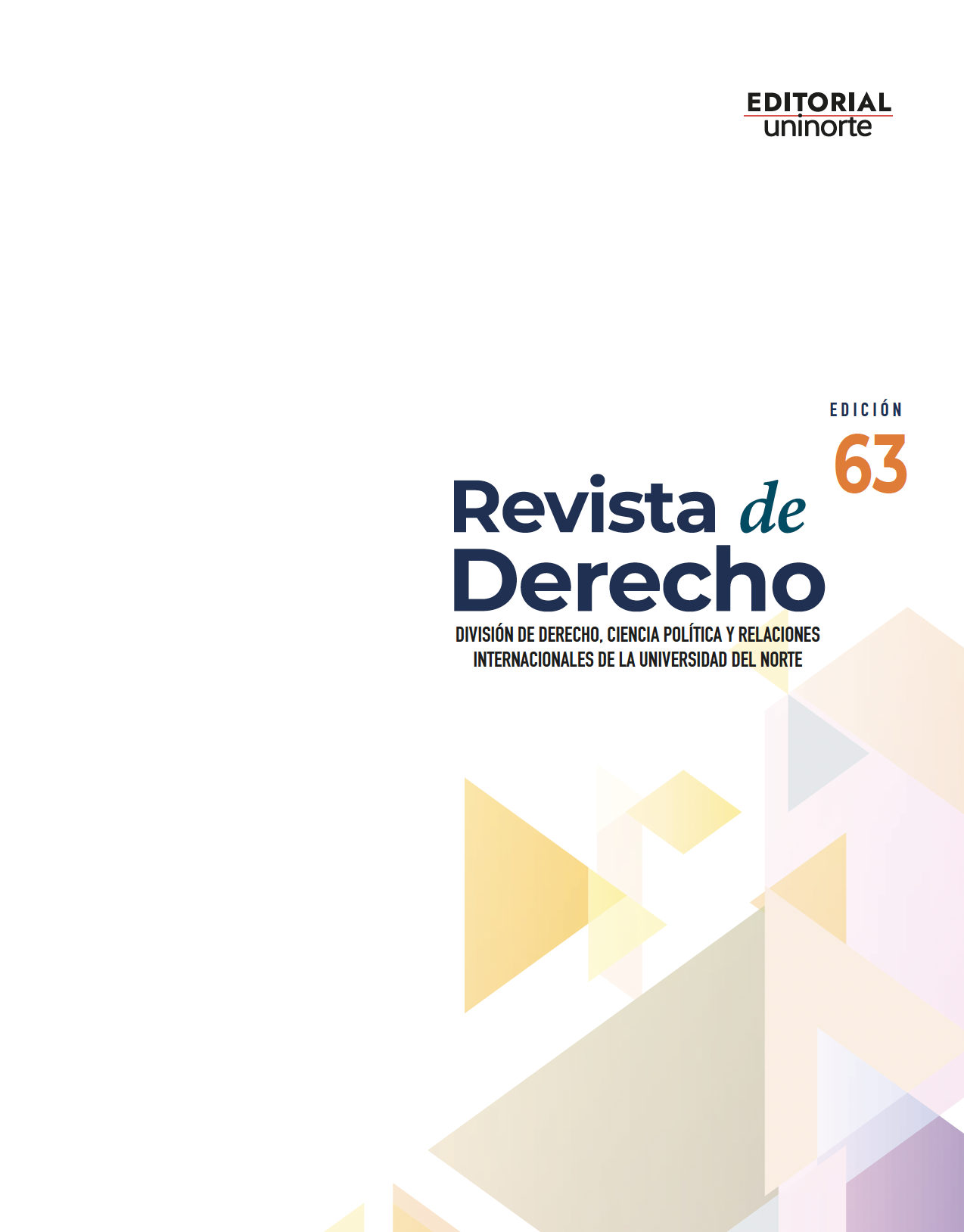The 1991 Act of the UPOV Convention and the fight for seeds
The 1991 Act of the UPOV Convention and the Fight for Seeds: The Resistance of Judicial and Legislative Activism
Keywords:
Food sovereignty, Judicial activism, Legislative activism, New varieties of plants, Seeds, UPOVAbstract
The objective of this paper is to study the resistance against the agricultural and food privatization promoted by the 1991 Act of the UPOV Convention. This Act promotes a regime for plant varieties that violate food sovereignty and security, among other rights. The paper places special emphasis on the countries of the economic south, such as Colombia and India. The methodology is deductive and hermeneutic, from a documentary analysis supported by a systematic interpretation. As a results, the paper concludes that the dynamics of agri-food hoarding is a logical consequence of the privatization of the countryside, and therefore requires an organized process of vindication that includes some elements that are extracted from the cases analyzed. In this way, it will be possible to propose a model of development that is aware of the realities of the peasantry and ethnic groups.
References
Adebola, T. (2019). Access and benefit sharing, farmers’ rights and plant breeders’ rights: reflections on the African Model Law, Queen Mary Journal of Intellectual Property, 9(1), pp. 105-121. doi http://dx.doi.org/10.4337/qmjip.2019.01.06
Colombia, Corte Constitucional de Colombia, Sentencia C-1051 de 2012.
Colombia, Corte Constitucional de Colombia, Sentencia C-696 de 2008.
Colombia, Corte Constitucional de Colombia, Sentencia SU-039 de 1997.
Colombia, Corte Constitucional de Colombia, Sentencia T-426 de 1992.
Colombia, Corte Constitucional de Colombia, Sentencia T-622 de 2016.
Correa, C. (2015). La protección de las obtenciones vegetales para los países en desarrollo. Una Herramienta para el diseño sui generis de protección de las obtenciones vegetales. Alfter: Association for Plant Breeding for the Benefit of Society.
Dutfield, G (2010). Intellectual property, biogenetic resources and traditional knowledge Londres: Earthscan.
Evenson, R., & Gollin, D. (2003). Assessing the impact of the Green Revolution, 1960 to 2000, Science, 300(5620), pp. 758-762. doi http://dx.doi.org/10.1126/science.1078710
Fakhri, M. (2022). Las semillas, el derecho a la vida y los derechos de los agricultores. Informe del Relator Especial sobre el derecho a la alimentación» presentado en el 49º período de sesiones del Consejo de Derechos Humanos. Asamblea General de la Organización de las Naciones Unidas. A/HRC/49/43/2022.
García-Jaramillo, L. (2019). Activismo judicial: un viejo concepto para nuevos desafíos. Ámbito Jurídico, 5 de junio de 2019. https://www.ambitojuridico.com/noticias/etcetera/constitucional-y-derechos-humanos/activismo-judicial-un-viejo-concepto-para
González Merino, A. (2018). El sistema de propiedad intelectual sobre variedades vegetales.¿ El sistema UPOV vigente atenta contra los derechos de los agricultores y la seguridad alimentaria?. Alegatos - Revista Jurídica de la Universidad Autónoma Metropolitana, 100, 909-932. http://alegatos.azc.uam.mx/index.php/ra/article/view/674
Gouttefanjat, F. (2021). Revolución Verde, neoliberalismo y transgénicos en México: hacia una subordinación del maíz al capital, Forhum International Journal of Social Sciences and Humanities, 3(4), pp. 108-119. doi http://dx.doi.org/10.35766/j.forhum2021.04.03.9
GRAIN. (2022a). El nuevo Proyecto de Ley de Semillas en la India. https://grain.org/article/entries/1111-el-nuevo-proyecto-de-ley-de-semillas-en-la-india
GRAIN. (2022b). UPOV: ¿Getting a Free TRIPs Ride? https://grain.org/e/321
Grinberg, M. (1999). Ecofalacias: de cómo las multinacionales se apoderan del discurso del ambiente. Buenos Aires: Editorial Galerna.
Helfer, L. (2005). Derechos de propriedad intelectual sobre variedades vegetales. Regímenes jurídicos internacionales y opciones políticas para los gobiernos. Roma: FAO.
Holt-Giménez, E. (2009). From food crisis to food sovereignty: the challenge of social movements. Monthly Review, 61(3). https://monthlyreview.org/2009/07/01/from-food-crisis-to-food-sovereignty-the-challenge-of-social-movements/
India, Parliament of India. The Essential Commodities (Amendment) Bill, 2020. https://prsindia.org/billtrack/the-essential-commodities-amendment-bill-2020
India, Parliament of India. The Farmers Empowerment and Protection Agreement on Price Assurance and Farm Services Act. 2000. https://prsindia.org/billtrack/the-farmers-empowerment-and-protection-agreement-on-price-assurance-and-farm-services-bill-2020
India, Parliament of India. The Farming Produce Trade and Commerce (Promotion and Facilitation) Bill 2020. https://prsindia.org/billtrack/the-farmers-produce-trade-and-commerce-promotion-and-facilitation-bill-2020
India, Parliament of India. The Protection of Plant Varieties and Farmers' Rights Act, 2001 (Act No. 53 of 2001). https://wipolex.wipo.int/es/text/128109
Lapeña, I. (2012). La propiedad intelectual sobre las semillas y sus implicaciones para la agricultura familiar en el Perú. Serie de Política y Derecho Ambiental [Working paper], 25. https://orgprints.org/id/eprint/25051/
Maraniello, P. (2012). El activismo judicial, una herramienta de protección constitucional. Tla-melaua: Revista de Ciencias Sociales, 5(32), pp. 46-83. doi http://dx.doi.org/10.32399/rtla.7.32.25
Martínez, L. (2004). El campesino andino y la globalización a fines de siglo: una mirada sobre el caso ecuatoriano. Revista Europea de Estudios Latinoamericanos y del Caribe, 77(1), pp. 25-40. doi: http://dx.doi.org/10.18352/erlacs.9676
Montenegro De Wit, M. (2019). Beating the bounds: how does open source become a seed common? The Journal of Peasant Studies, 46(1), pp. 44-79. doi http://dx.doi.org/10.1080/03066150.2017.1383395
Núñez, J. (2008). Prácticas sociales campesinas: saber local y educación rural. Investigación y Postgrado, 23(2), pp. 45-88. https://revistas.upel.edu.ve/index.php/revinpost/article/view/873
Oguamanam, C. (2006). Intellectual property rights in plant genetic resources: Farmers' rights and food security of indigenous and local communities. Drake Journal of Agriculture Law, 11, pp. 273-305. https://aglawjournal.wp.drake.edu/wp-content/uploads/sites/66/2016/09/agVol11No3-Oguamanam.pdf
Parra Dussán, C., & Rodríguez, G.A. (2005). Comunidades étnicas en Colombia: cultura y jurisprudencia. Bogotá: Universidad del Rosario.
Peschard, K. (2021). Searching for flexibility Why parties to the 1978 Act of the UPOV Convention have not acceded to the 1991 Act. Zurich: Association for Plant Breeding for the Benefit of Society.
Peschard, K., & Randeria, S. (2020a). Keeping seeds in our hands’: the rise of seed activism. The Journal of Peasant Studies, 47(4), pp. 613-647. doi http://dx.doi.org/10.1080/03066150.2020.1753705
Peschard, K., & Randeria, S. (2020b). Taking Monsanto to court: legal activism around intellectual property in Brazil and India. The Journal of Peasant Studies, 47(4), pp. 792-819. doi http://dx.doi.org/10.1080/03066150.2020.1753184
Pingali, P., & Raney, T. (2005). From the green revolution to the gene revolution: how will the poor fare. ESA Working Paper, 5(9), pp. 1-15. https://www.fao.org/agrifood-economics/publications/detail/es/c/120918/
Ribeiro, S., & Shand, H. (2008). Seeding new technologies to fuel old injustices. Development, 51(4), PP. 496-503, doi: http://dx.doi.org/10.1057/dev.2008.53
Richards, D. (2010). Contradictions of the New Green Revolution: A view from South America's southern cone, Globalizations, 7(4), pp. 563-576, doi: http://dx.doi.org/10.1080/14747731.2010.505025
Rivas-Robledo, P. (2022). ¿ Qué es el activismo judicial? Parte I. Desiderata para una definición de activismo judicial. Díkaion, 31(1), 70-92. https://doi.org/10.5294/dika.2022.31.1.4
Sánchez Botero, E. (2005). Reflexiones en tomo de la jurisdicción especial indígena en Colombia. Revista IIDH, (41), 225-251. https://www.corteidh.or.cr/tablas/r08062-9.pdf
Sarmiento Cifuentes, F. (2022). Integración Latinoamericana y del Caribe: la Necesaria consolidación institucional. Bogotá: Tirant Lo Blanch.
Sreenath, L. (2006). Impact of post-trips IP Regime on Indian agriculture. CA Journal, 54(8), pp. 1178-1185. http://tapmi.informaticsglobal.com/429/
UPOV (2021). Members of the International Union for the Protection of New Varieties of Plants International Convention for the Protection of New Varieties of Plants, UPOV Convention (1961), as revised at Geneva (1972, 1978 and 1991) Status on November 3, 2021. https://www.upov.int/edocs/pubdocs/en/upov_pub_423.pdf
Uribe Arbeláez, M. (2016). Derechos de los agricultores y convenio UPOV/91. Revista La Propiedad Inmaterial, 21(1), pp. 139-172. doi http://dx.doi.org/10.18601/16571959.n21.06
Van Alstyne, W. (1969). Critical Guide to Marbury v. Madison. Duke Law Journal, 18, pp. 1-47. https://scholarship.law.duke.edu/faculty_scholarship/544/
Verzola, R. (1999). India: Smart Farmers Burn Monsanto's GE Cotton. Synthesis/Regeneration, 19(19). http://www.greens.org/s-r/19/19-19.html
Zamora, J. (1999). Determinación de necesidades de investigación para establecer causas de resistencia a la asociatividad comercial campesina, Agro sur, 27(1), pp. 37-42. doi http://dx.doi.org/10.4206/agrosur.1999.v27n1-05
Downloads
Published
Issue
Section
License
Los artículos publicados en la Revista de Derecho y todo su contenido se encuentran bajo licencia Creative Commons CC BY. Creative Commons Attribution 3.0.








